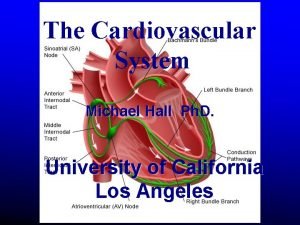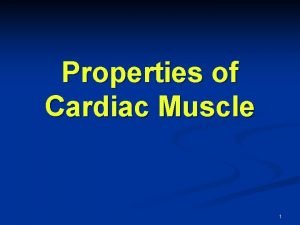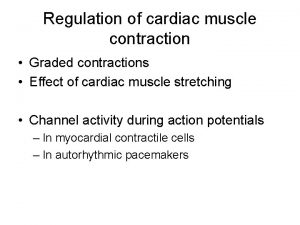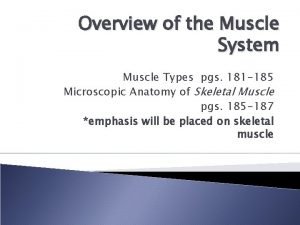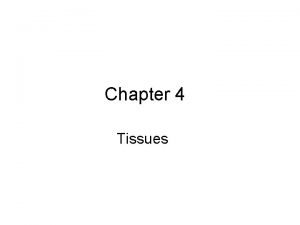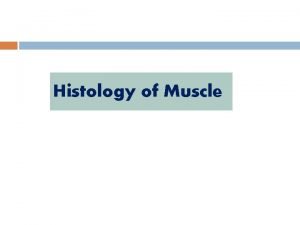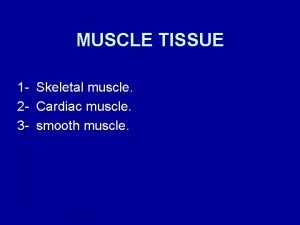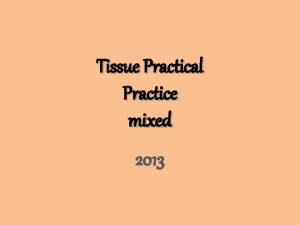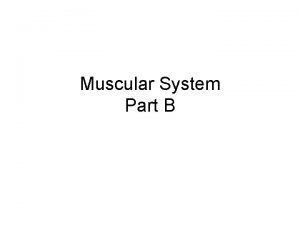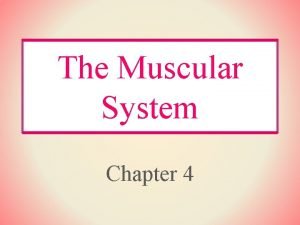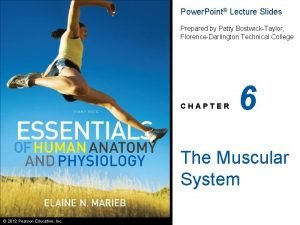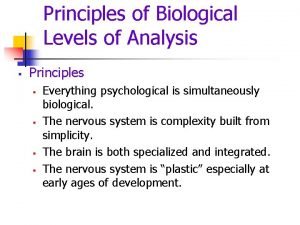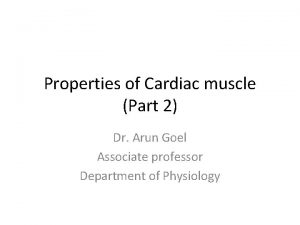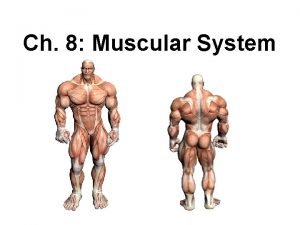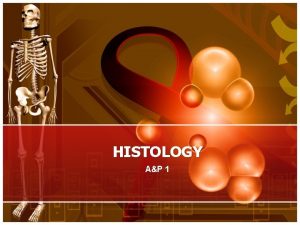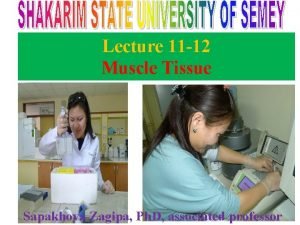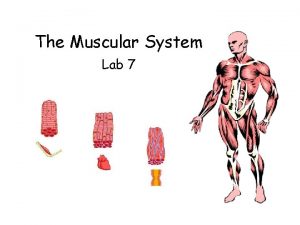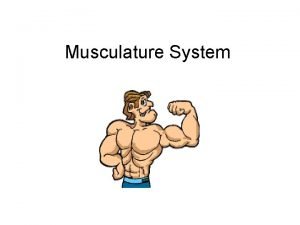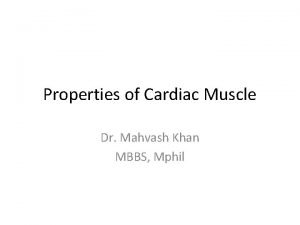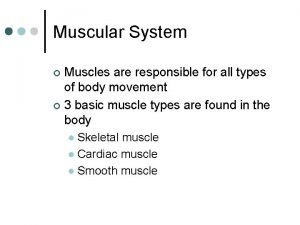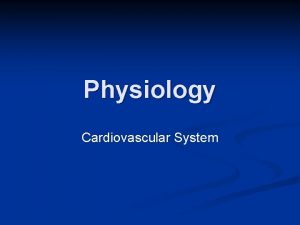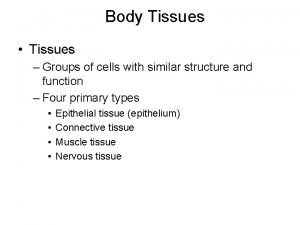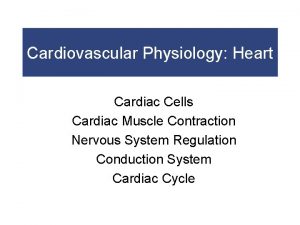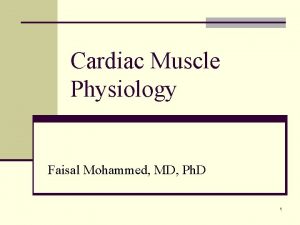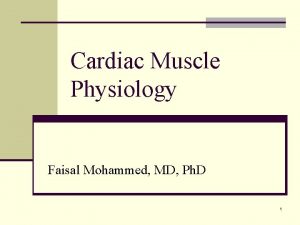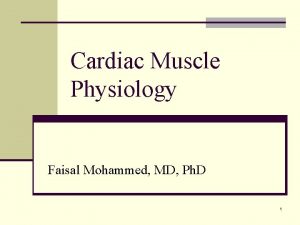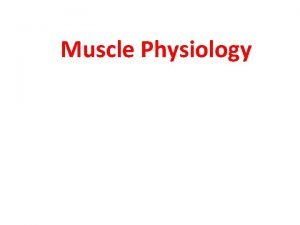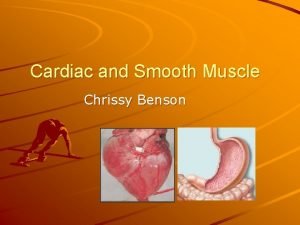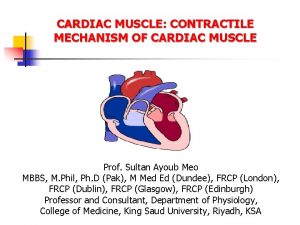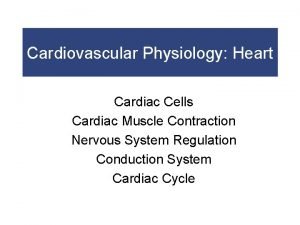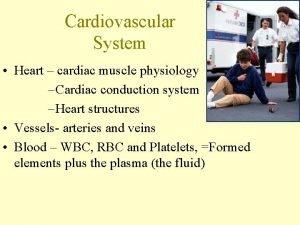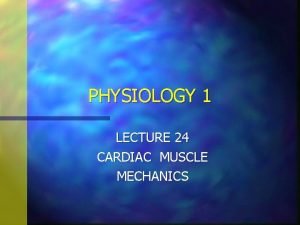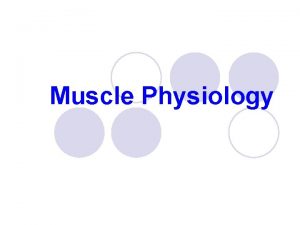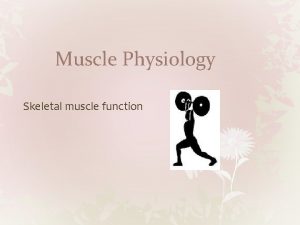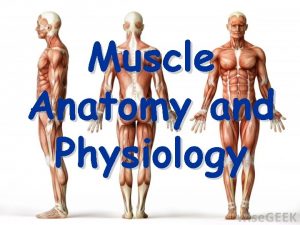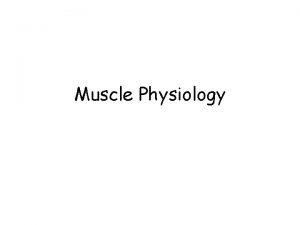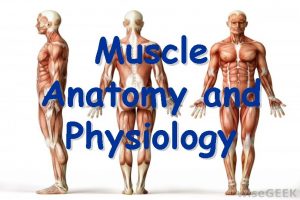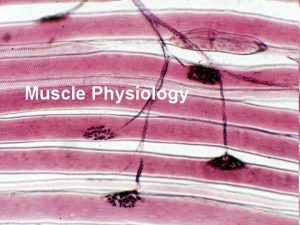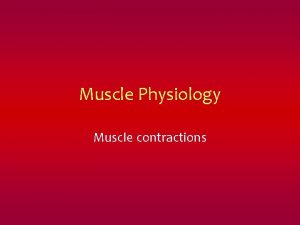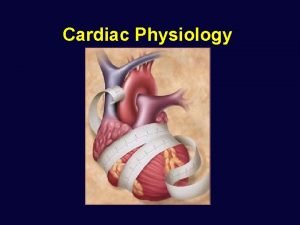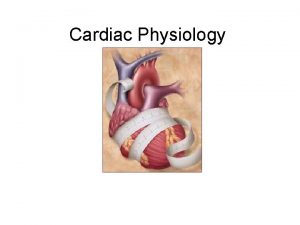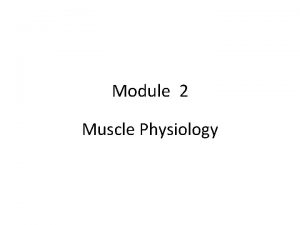Cardiac Muscle Physiology Faisal Mohammed MD Ph D

























- Slides: 25

Cardiac Muscle Physiology Faisal Mohammed, MD, Ph. D 1

Objectives: By The end of this lecture students should be able to: n Distinguish the cardiac muscle cell microstructure n Describe cardiac muscle action potential n Point out the functional importance of the action potential n Outline the intracellular calcium homeostasis 2


Wall of the heart Cardiac Muscle Cells




Cardiac Muscle Vs Skeletal Muscle v Syncytium structure v Gap Junction (electrical coupling) low resistance area v Poorly developed Sarcoplasmic reticulum (SR) v Transverse (T)Tubule more frequent in cardiac muscler v Rich in mitochondria v Low in nuclei 8

Permeability Changes and Ionic Fluxes During an Action Potential (skeletal Muscle) 9

1 0 2 3 4

The Action Potential in Skeletal and Cardiac Muscle Figure 20. 15


13

14

15

Functional importance of Cardiac action potential n The decrease in conductance (permeability) of potassium at phase 0 and 1 of the cardiac action potential contributes to the maintenance of depolarization in phase 2 (plateau) n The long absolute refractory period prevent the occurrence of tetanus (maintained contraction without a period of relaxation) in the cardiac muscle. n Skeletal muscle action potential is short that allows tetanus to occur

(inactivation gate) h Gate (activation gate) m Gate Activation gates open when the membrane potential becomes less negative and the inactivation gates close when the potential becomes less negative. The activation gate is fast but the inactivation is slow responding


The importance of calcium influx through the slow voltage gated calcium channels 19

Mechanism of Cardiac Muscle Excitation, Contraction & Relaxation

Intracellular Calcium Homeostasis… 1 21

Intracellular Calcium Homeostasis… 1 22

Intracellular Calcium Homeostasis… 2 23

Cardiac Muscle action potential Vs. Skeletal Muscle Ø Phase 0 –Depolarization phase (Na+ influx) Ø Phase 1 partial repolarization (Not in skeletal) Ø Phase 2 Plateau (~ depolarization not in skeletal) slow calcium channels Ø Phase 3 fast repolarization phase (K+ repolarization() Ø Phase 4 resting membrane potential 24

Thank You 25
 Epcardium
Epcardium Muscle tissue
Muscle tissue Properties of cardiac muscle
Properties of cardiac muscle Cardiac muscle
Cardiac muscle Sarcoplasmic
Sarcoplasmic General structure of exocrine glands
General structure of exocrine glands Characteristics of skeletal smooth and cardiac muscle
Characteristics of skeletal smooth and cardiac muscle Properties of cardiac muscle
Properties of cardiac muscle Transitional epithelium
Transitional epithelium Smooth muscle gap junctions
Smooth muscle gap junctions Cardiac muscle tissue
Cardiac muscle tissue Characteristics of skeletal smooth and cardiac muscle
Characteristics of skeletal smooth and cardiac muscle All or none law of cardiac muscle
All or none law of cardiac muscle Properties of cardiac muscle
Properties of cardiac muscle Characteristics of skeletal smooth and cardiac muscle
Characteristics of skeletal smooth and cardiac muscle Cardiac muscle striations
Cardiac muscle striations Cardiac muscle
Cardiac muscle Function of muscle
Function of muscle Lab 7 the muscular system
Lab 7 the muscular system Comparison of skeletal cardiac and smooth muscle
Comparison of skeletal cardiac and smooth muscle Smooth muscle under the microscope
Smooth muscle under the microscope What is all or none principle
What is all or none principle Cardiac muscle characteristics
Cardiac muscle characteristics Properties of cardiac muscle
Properties of cardiac muscle Similar pictures
Similar pictures Hypercalcemia ecg
Hypercalcemia ecg

